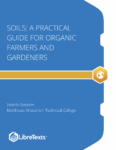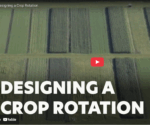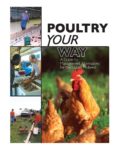The educational materials listed on this page are about Organic Agriculture.
Organic agriculture integrates “cultural, biological and mechanical practices that foster cycling of resources, promote ecological balance, and conserve biodiversity.” Organic and sustainable agriculture often include the use of cover crops, crop rotation, use of tools and machinery for weed and pest management, and conservation tillage. Synthetic fertilizers, sewage sludge, irradiation and genetic engineering may not be used for food to be certified and labelled USDA organic. Organic livestock must have access to the outdoors and be “fed 100 percent certified organic feed, managed without antibiotics, added growth hormones, mammalian or avian byproducts, or other prohibited feed ingredients.” SARE has many helpful reads including Transitioning to Organic Production, which addresses conversion strategies, organic farming production practices, marketing approaches and federal organic standards for certified organic crop and livestock. SARE’s Crop Rotation on Organic Farms reviews how rotating crops improve soil quality and health and help manage pests, diseases, and weeds.
Showing 1-4 of 4 results

Soils: A Practical Guide for Organic Farmers and Gardeners
This textbook for organic farmers and gardeners covers the physical characteristics of soil, soil chemistry, organic matter, nutrients from soil, carbon flows and nutrient cycles, soil sampling/testing, fertilizers, compost, and manure.

Organic Field Crop Production Videos
The following videos walk farmers through sustainable concepts and practices for organic weed control, including crop rotations and cultivation techniques. The videos highlight farmer perspectives on these topics and are part of a larger organic field crops course, available at https://courses.organicagronomy.org. Designing a Crop Rotation The concept of crop rotation is not new to organic […]

Poultry Your Way
Poultry Your Way is for anyone interested in commercially raising, processing, and marketing poultry. It is designed to help you consider alternatives, and to help you make decisions about which alternative(s) will be most compatible with your family and business goals.
Considering Sustainable Agriculture on Your Rented Land
Using sustainable agriculture practices on your rented land can help protect soil and water quality, increase income over the long term, and satisfy personal values for the landowner and/or the tenant.